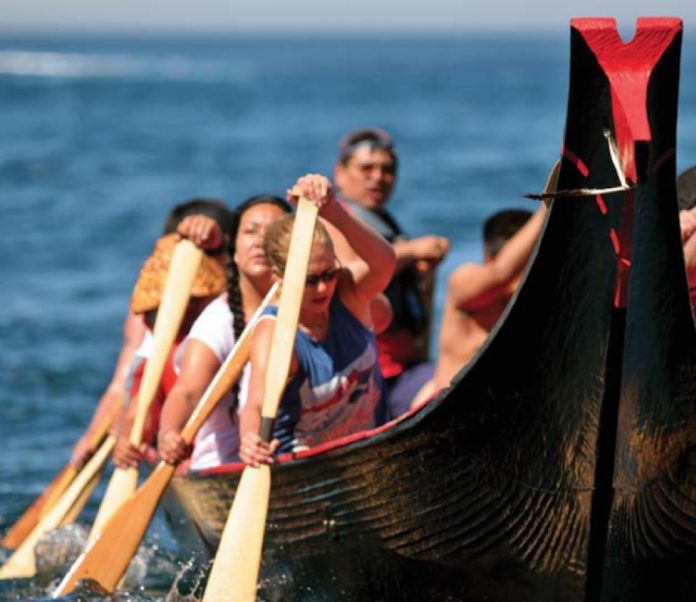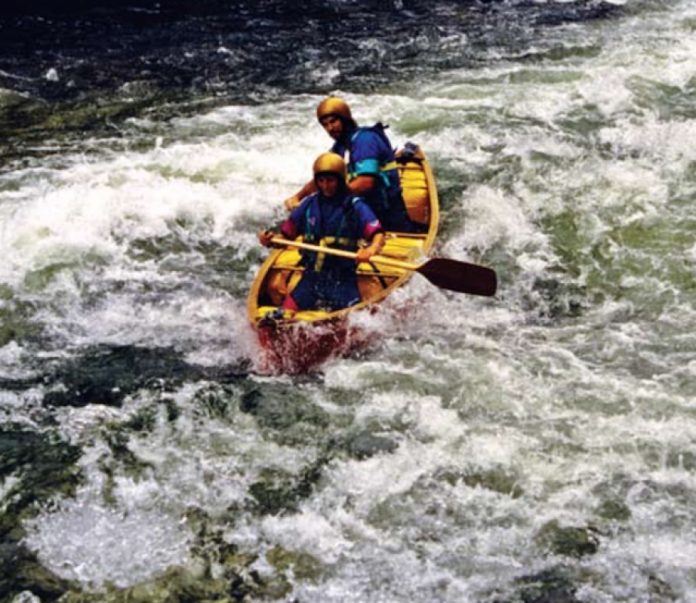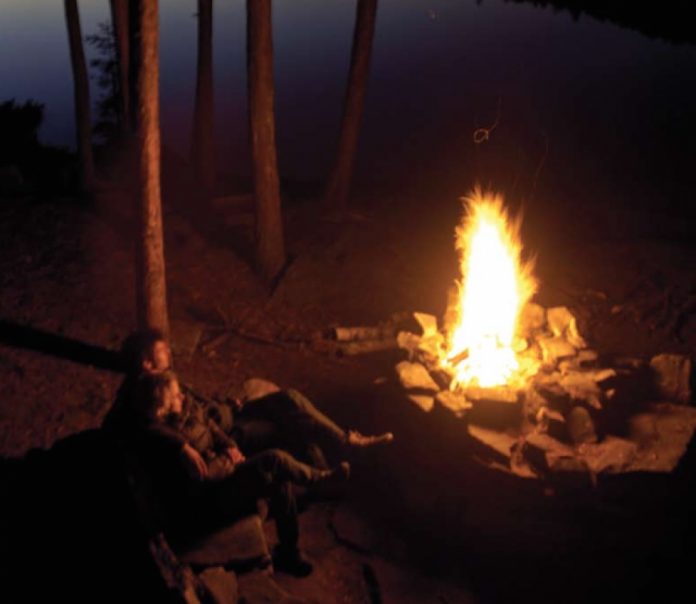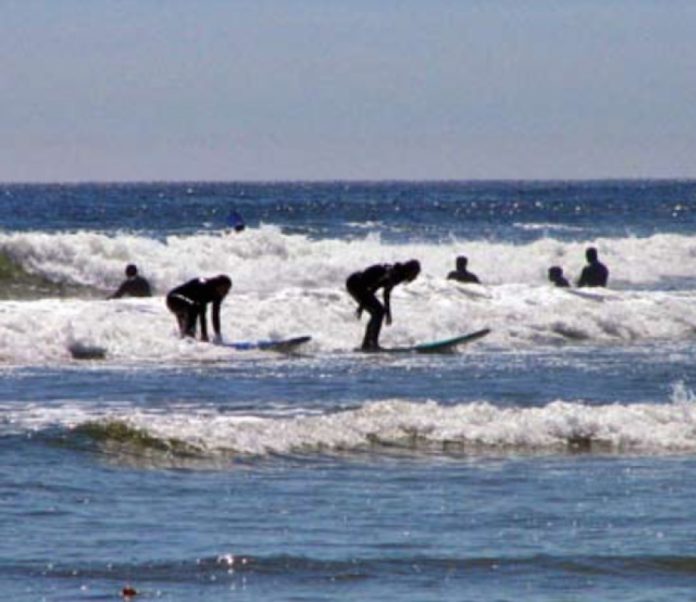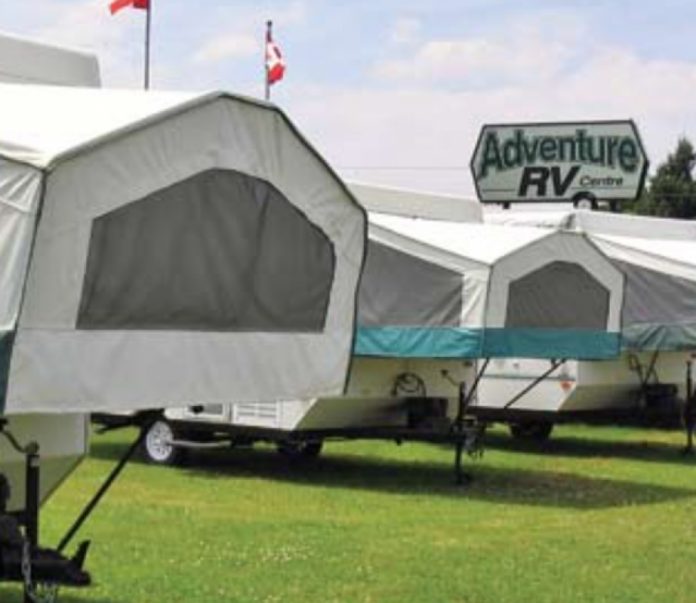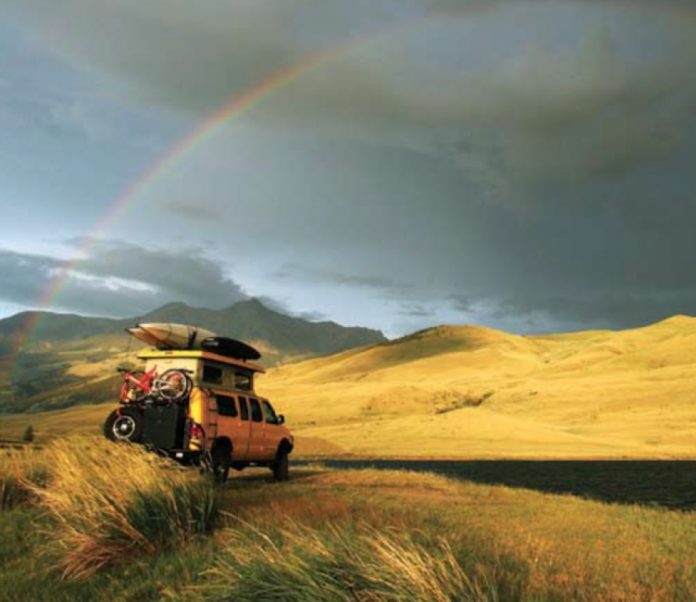“Don’t paddle the canoe. Pull it, long and deep, in rhythm with the pacer. And one more thing, don’t call it a boat. Ever.” Rudy stares at me, before his thin lips turn into a smile and he introduces himself, listing a little on a spine wilted from fetal alcohol syndrome. We have gathered for the Tribal Journey. We leave tomorrow.
Every summer the Quinault Indian Nation sponsors its youth to take part in the Tribal Journey. Native tribes from Oregon to Alaska send paddlers in dugout canoes to honour centuries-old traditions of transport, festivities, and trade.
This year, 70 canoes, weighing up to 1,400 pounds and powered by 11 paddlers, will average 56 kilometres a day for three weeks as they make their way north along the Olympic Peninsula then east into the Strait of Juan de Fuca to Seattle and north to Sand Point.
This year I will join them. Though I was never actually invited to take part. It just seemed to be assumed I would participate.
I had recently moved to Quinault with my partner Steph who was working in the community health centre. The Quinault’s acceptance of non-natives is confused. In truth, much about the Quinault is confused—or worse. Many children are born to young, disadvantaged parents, too many babies nurse on Pepsi instead of breast milk, adolescents play with meth addiction and adults struggle with diabetes.
But there is also hope. You can see it in the eyes of the proud, many of whom have been busy for the last several weeks refurbishing Quinault’s new dugout canoes.
The last of Quinault’s traditional dugouts had disappeared early last century, under the watchful eye of the Bureau of Indian Affairs. Folklore kept a faint ember of memory glowing and in 1998 a Quinault elder and his son decided to act on the stories of his childhood and gathered from the elders what they could about shaping the ancient cedars.
They used deer antlers to carry glowing pumice from a nearby fire to reduce the tree’s 700-year-old belly to smouldering embers. Then they chipped it away with sharpened rock and steel until a canoe took shape—and a community began to remember.
Now four dugout canoes sit on the banks of the Quinault River waiting for their crews and high tide, both of which will come early the next morning.
“Circle up pullers!” our skipper Ritchie belts as excited kids crowd around, shaking off the damp cold in the dawn’s faint shadows.
Ritchie tells Don he will be sitting behind the pacers. He has known Don his whole life and knows that Don will put his head down and pull with all his strength all the way to Sand Point. In the last year Don has educated himself about nutrition and exercise. This is Don’s first journey, and I suspect not his last.
SEPERATE CANOES, SEPERATE TRIBES ON THE SAME JOURNEY
Ritchie chooses me as a thruster and I sit in the rear of the canoe. Ritchie knows from the silence we have shared while carving paddles in the boathouse that I am determined and strong. When we push off I pull as hard as I can as the canoe leaves the steady flow of the river and pushes into the waves of the Pacific.
Ancient songs echo off sea walls while grey whales breach and sea otters play. When each sun sets we take shelter with the other tribes.
As the days pass we fight against the current and the swell. Then, two days into the eastern leg a summer storm whips up two-metre waves that capsize a Makah canoe, killing a Nuu-chah-nulth chief named Jerry Jacks and hospitalizing three of his crew.
We were from separate tribes, in separate canoes, but we were all on the same journey.
That evening, I walk into the community centre where the paddlers have gathered. To look into their eyes is to see fear and confusion. These nations are rediscovering pride and the death of a chief of the most intact tribe during this symbolic journey is crushing. All mouths are wondering, “Do we stop for three days to show respect? Or do we continue with renewed inspiration?”
The children continue to play, the police continue to patrol, the adults continue to speculate, and the elders chant and pray. The prayer tonight is for clarity, and confidence in whatever guidance we are offered.
We take the evening to mourn, and then we continue. We are determined to let Jacks’ passing inspire us. Determined to make it to Sand Point. Determined to show the world that it can take away the Quinault’s past but it cannot take away its future.
Amman Jordan is a professional filmmaker.
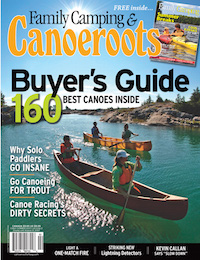 This article first appeared in the Early Summer 2007 issue of Canoeroots Magazine. For more great content, subscribe to Canoeroots’ print and digital editions here.
This article first appeared in the Early Summer 2007 issue of Canoeroots Magazine. For more great content, subscribe to Canoeroots’ print and digital editions here.



